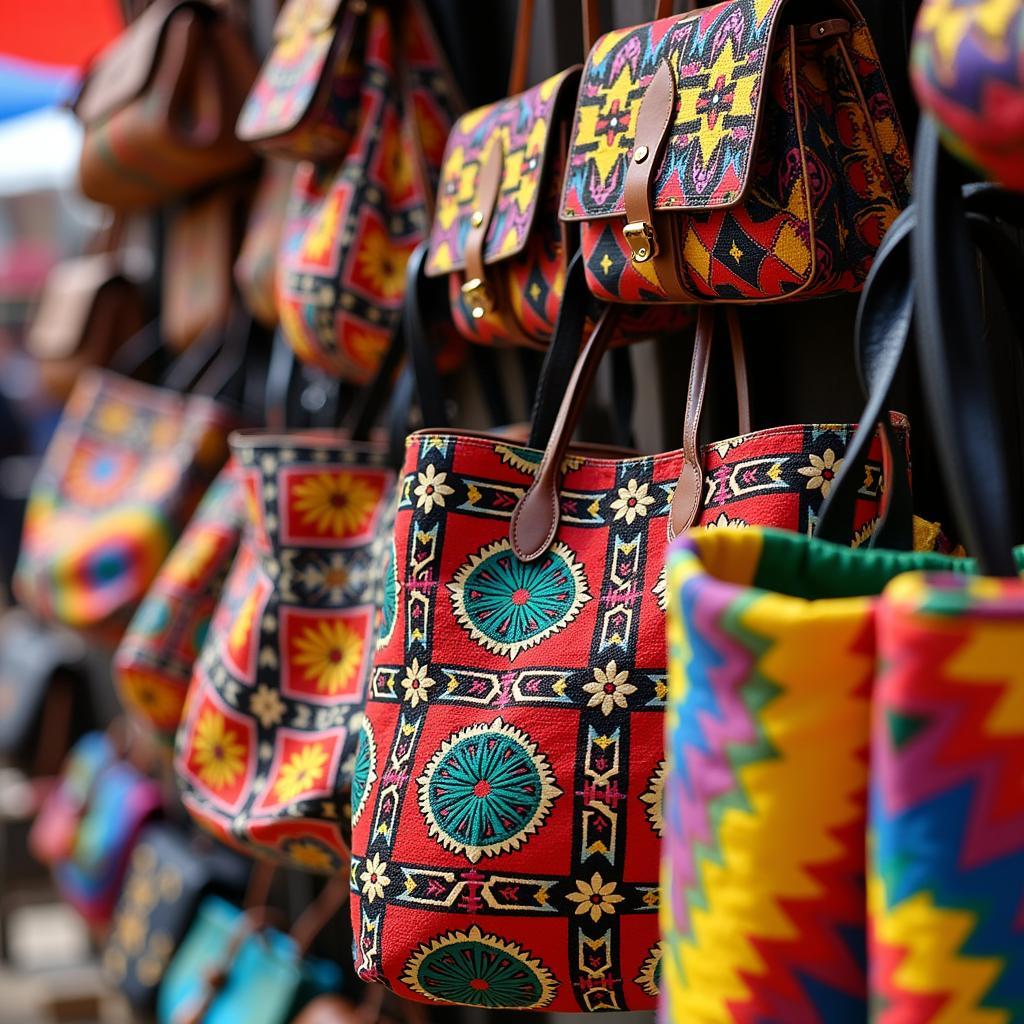A Delicious Journey Through African Biscuits
African Biscuits represent a diverse and delicious world of baked treats, far beyond the familiar cookies and crackers found in Western supermarkets. From the crumbly, buttery goodness of South African rusks to the spiced, aromatic delights of North African chebakia, exploring african biscuits is a culinary adventure that unveils the continent’s rich cultural tapestry. Discover these unique flavors and textures, and you’ll gain a deeper appreciation for the diverse baking traditions across Africa.
Exploring the Sweet and Savory World of African Biscuits
African biscuits, while often overlooked, offer a fascinating insight into the continent’s culinary history and cultural influences. These aren’t just simple snacks; they’re often integral to social gatherings, celebrations, and everyday life. Some are sweet, perfect with a cup of tea or coffee, while others are savory, complementing hearty meals. Let’s delve into some of the most popular varieties.
South African Rusks: A Beloved Breakfast Staple
South Africans are passionate about their rusks, twice-baked biscuits, often enjoyed with coffee or tea. These crunchy treats come in various flavors, from buttermilk and muesli to aniseed and even condensed milk. Their unique texture and robust flavor make them a beloved breakfast staple across the country. Have you ever tried dipping a rusk in your morning coffee? It’s a truly South African experience!
North African Chebakia: A Festive Sesame Treat
Chebakia, a Moroccan delicacy, are flower-shaped sesame cookies deep-fried and then coated in honey. Their intricate design and sweet, sticky glaze make them a popular treat during Ramadan and other special occasions. These beautifully crafted biscuits are a testament to the artistry and culinary skill found in North African baking.
Imagine biting into a warm, honey-glazed chebakia; the combination of crispy sesame and sweet honey is simply divine.
Beyond the Familiar: Discovering Other African Biscuit Delights
Beyond rusks and chebakia, many other delightful african biscuits await discovery. From the peanut-based biscuits popular in West Africa to the cornmeal cookies found in parts of East Africa, each region boasts its unique specialties. See our article about african cookies for more information. Many of these biscuits incorporate local ingredients, reflecting the diverse agricultural landscape of the continent. These lesser-known treats offer a glimpse into the unique flavors and textures that characterize African cuisine. They often reflect local ingredients and traditions, making them even more special.
For those curious about the broader culinary scene in South Africa, exploring typical south african food is a must. It’s a fantastic starting point to understanding the rich gastronomy of this region.
“African biscuits are more than just snacks; they are a reflection of the continent’s diverse cultures and traditions,” says Anika Nkosi, a renowned South African chef. “Each bite tells a story, connecting us to the land and its people.”
Baking with a Twist: Modern Adaptations of African Biscuits
Traditional african biscuits are constantly being reimagined and adapted to modern tastes. Chefs and home bakers alike are experimenting with new flavors, ingredients, and techniques, creating exciting variations on classic recipes. These innovations keep the tradition of African baking alive while introducing new and exciting flavors to the world.
You can discover more about the world of African cuisine by exploring african food images.
“The beauty of African biscuits lies in their adaptability,” shares Kofi Annan, a celebrated Ghanaian baker. “They can be enjoyed as a simple snack or incorporated into elaborate desserts, showcasing their versatility.”
As we delve deeper into the world of african biscuits, you can find valuable resources and even connect with bakers who specialize in these treats at this african biscuits website. Supporting african american brands can also be a great way to discover exciting new products and contribute to economic growth within these communities.
Conclusion
African biscuits offer a delightful and diverse culinary experience. From the familiar comfort of South African rusks to the intricate sweetness of North African chebakia, these baked treats tell a story of rich traditions and cultural influences. Exploring the world of african biscuits is a journey of taste and discovery, revealing the vibrant heart of African cuisine.
FAQ
- What are some common ingredients used in African biscuits?
- Where can I find authentic African biscuit recipes?
- Are African biscuits typically sweet or savory?
- What are some popular African biscuit variations?
- What are some traditional occasions for serving African biscuits?
- How can I store African biscuits to maintain their freshness?
- Where can I buy African biscuits online?
Common Scenarios:
- Scenario 1: You are planning a themed party and want to offer some unique snacks. African biscuits provide a diverse and flavorful option that will impress your guests.
- Scenario 2: You are looking for a new breakfast treat. South African rusks are a hearty and delicious choice that can be enjoyed with coffee or tea.
- Scenario 3: You want to explore new flavors and baking traditions. African biscuits offer a world of culinary discovery, from sweet to savory and everything in between.
Further Exploration
- Explore other traditional African desserts.
- Learn more about the history of African cuisine.
- Discover the various regional variations of African biscuits.
Contact us for support at Phone: +255768904061, Email: kaka.mag@gmail.com or visit us at Mbarali DC Mawindi, Kangaga, Tanzania. We have a 24/7 customer service team.


